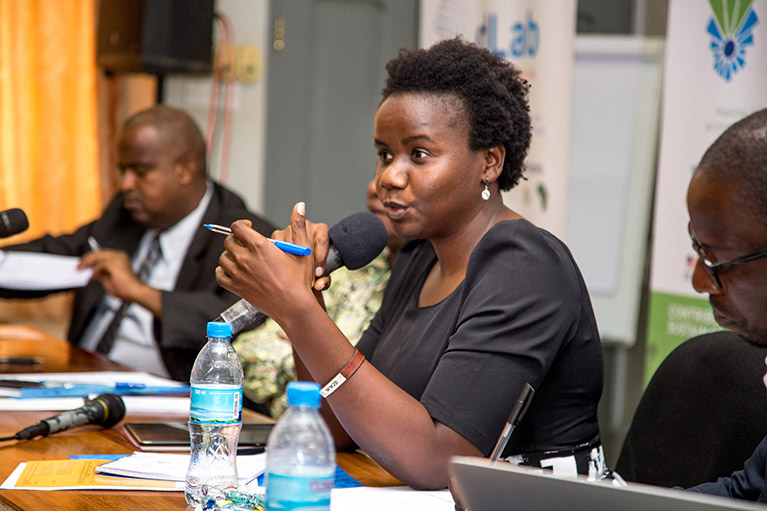Five tips for ensuring development projects benefit people of all genders

Why is gender equality such a tough nut to crack, and what can development professionals do about it?
It has been nearly 50 years since global research established the indisputable connection between gender inequalities, on the one hand, and the potential for positive economic, political, and social change on the other. But consistent, meaningful progress toward gender equality remains elusive. At the aggregate level, many gaps are worsening again for the first time in years.
For decades, researchers and practitioners around the world have worked diligently to document the greatest gender-related disparities and craft approaches to effectively reduce inequalities, thus removing a serious impediment to development. And there is compelling evidence from global bodies such as the OECD and UNDP that such efforts have been fruitful: gender gaps have decreased along many key measures, such as primary education and maternal mortality.
Why are organizations still struggling to integrate gender into development work?
- Context. Gender roles and expectations vary by culture and change over time and place. Key questions such as who has access to assets such as land, income, and technology or who influences decision-making at the household, community, institutional, and country level often defy easy answers. Any attempts to understand—much less change—gender-based differences require customized approaches and ongoing adaptation to evolving circumstances.
- Controversy. While the root of gender-based inequalities is the interplay among roles and expectations assigned culturally to both men and women, the overwhelming majority of disparities and discrimination negatively affect women, girls, and gender nonconforming individuals. When conversations, reports, and events begin with “gender” and transition to a primary focus on females, it often creates confusion around both nomenclature and goals.
- Complexity. Effectively transforming gender-based disparities requires going beyond a focus on the power relations between men, women, and gender nonconforming individuals. It means teasing out how other identities—ethnic, religious, linguistic, age, class, caste, disability status, etc.—interact with gender to create different opportunities for subsets of women, girls, men, and boys.
What can development professionals do?
Just as men and women experience opportunities and obstacles differently, they also experience your programs in varied ways—whether as staff, partners, participants, or beneficiaries.
Thus the first and most essential step to designing and carrying out transformative activities for gender equality is to deepen understanding of gender-related disparities relevant to the technical sector and geographic area of your work. This is accomplished by seeking out, and then listening very carefully to, evidence of gender-related opportunities and constraints.
The next step is to translate nuanced, local priorities and conditions into gender responsive programming to reduce disparities and amplify opportunities for all.
Here are five tips I’ve found helpful for navigating conceptual and pragmatic challenges to make meaningful progress toward gender equality:
1. Listen with an open heart
It is the responsibility of any development effort to work in partnership with local experts, be they staff, CSO subgrantees, government officials, or entrepreneurs.
Collaborating on gender equality requires a deep sense of humility. Challenging gender roles and expectations goes beyond laws and institutional policies. It goes into kitchens and bedrooms, into classrooms and workplaces. Progress in the public sphere can be accompanied by pushback at home and in the community.
Consult a diverse range of local gender experts, and align your priorities with theirs. When in doubt, invoke the Hippocratic Oath: First, Do No Harm.
2. Gather data with an open mind
Given the complexity of gender as just one of many variables influencing power and privilege, national level statistics often obscure significant differences at the regional or local level, particularly in multiethnic or conflict-affected areas. And while most gender disparities disadvantage women and girls, gender norms can also operate to the detriment of men and boys.
Ensure that you design and adapt activities based on nuanced evidence from diverse sources.
Mine disaggregated data (by sex and age, at a minimum!) for trends that defy stereotypes and hint at solutions.
Example from the West Bank
The USAID-funded Partnerships With Youth project in the West Bank expands educational and leadership opportunities for young people ages 14–29 by creating sustainable hubs for youth innovation and learning, called Youth Development Resource Centers.
When project staff noted a trend in participant data from the Youth Centers—participation of young males age 18–25 was significantly decreasing—they requested support from IREX’s Center for Applied Learning and Impact to conduct a youth-led gender assessment.
The assessment revealed gender-based pressures and perceptions that were negatively affecting the participation of young men. For example:
- Despite male youth unemployment rates of nearly 40% and strong gender norms reinforcing the primacy of the male breadwinner role, young women age 18–25 were much more likely to avail themselves of the Youth Centers’ range of free employability training such as IT skills.
- Young men, in contrast, perceived their existing social networks as more important than skills training when seeking employment.
- Young men also also reported discomfort with mixed-gender activities at the Youth Centers—a concern that community members also ascribed to young women and their parents in West Bank and East Jerusalem, but which had not dampened female participation rates.
As a result, the youth researchers were able to gather insights from their communities and make concrete recommendations to help the Youth Centers adjust training content and outreach methods to better serve all youth.
3. Cultivate local champions with open arms
Changing the underlying norms that create and maintain inequalities requires winning hearts and minds.
Successful approaches to gender equality go beyond documenting gaps and crafting persuasive rational appeals to do the right thing, or do the smart thing. They recognize the need to link efforts for gender equality with other movements for social justice, despite the difficulties of aligning diverse agendas. They inspire emotional investment in the hard work of building positive alternatives.
Build momentum for lasting change by creating collaborative rather than competitive spaces for passionate local champions to work together.
Example from Ukraine
The Citizen Engagement and Reform Communication project in Ukraine builds understanding, trust, and productive relationships between citizens and police by establishing platforms for communication, engagement, and collaboration. With visionary leadership from within, the Ministry of Internal Affairs has instituted a wave of institutional reforms to tackle a history of police hostility to human rights and resultant public distrust, including on the issue of gender-based violence.
IREX conducted a gender assessment that informed the project team’s support to the ministry’s bold plans to embrace international standards on prevention and response to gender-based violence. It included:
- The creation of specially trained domestic violence response units.
- A system of gender focal points within the ministry.
- An interministerial working group to improve coordination between law enforcement, social protection, health, and other key agencies.
Equipped with project data, international best practices, and insights from the assessment, the team has provided training and technical assistance to ministry staff and enriched the project’s expanding gender-focused stream of activities for public engagement in reform processes.
The impact is already being felt: Whereas in 2016 only half of Ukrainians reported that they would call the police if they experienced domestic violence, viewing this project public service announcement on domestic violence increased trust in the police response by 10%. It was particularly effective among female viewers, 83% of whom reported they would call the police in the event of domestic violence (up from 57%). By 2017, half of all calls to the Kyiv police involved domestic violence, and stronger punishments and protections were signed into law in January 2018.

4. Be creative about points of entry
Training staff, partners, and project beneficiaries on gender issues is a tried and true recommendation to deepen understanding through experiential learning—but it is not enough. It is most effective to devise multiple entry points to integrate gender concerns.
Monitoring, evaluation, and learning plans are an excellent start, but budgets, procurement policies, and hiring practices should not be overlooked.
Consider gender integration as an essential component of management processes and the project life cycle. Walk the talk.
Example from Ghana and the United States
The World Smarts STEM Challenge pairs high school teachers and students from different countries on collaborative, virtual teams to create STEM solutions to global problems inspired by the UN Sustainable Development Goals. In 2017, a World Smarts STEM Challenge in Ghana and the US was made possible by a grant from the Carnegie Corporation of New York.
An IREX assessment found the program design, implementation, and evaluation were gender-responsive in multiple ways:
- The program design drew upon research on gender differences in pedagogy and effective strategies to boost female enrollment, retention, and attainment outcomes in STEM education.
- During implementation, the program offered to participating teachers a webinar on gender issues in education.
- The program provided meaningful opportunities for participation for everyone in the gender-balanced student cohort (52% girls vs 48% boys).
As a result, gender differences in outcomes were very slight compared to gender gaps in STEM retention and achievement typically seen among adolescents in both countries. Participation in the World Smarts interdisciplinary learning model piqued all students’ interest in gender & STEM issues: when asked at the close of the program to indicate their preference for future STEM Challenge subjects among the UN Sustainable Development Goals, students ranked SDG 5 (Gender Equality) third.
5. Incremental positive change is better than no change
This tip almost needs no elaboration. We all face the development dilemma—anticipated results framed in ambitious and aspirational terms provide a useful roadmap, yet hold the potential to disillusion when political upheaval, economic crises, and conflict conspire against progress. When you meet resistance or misunderstanding, small wins can build trust and willingness to tackle more challenging gender disparities over time.
Aim for the sky, but create contingency plans.